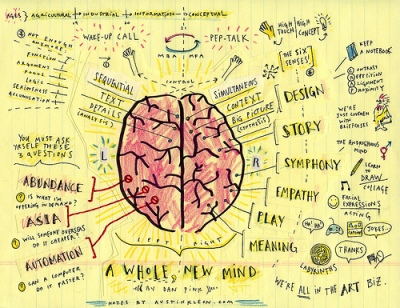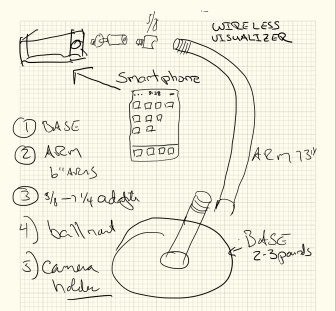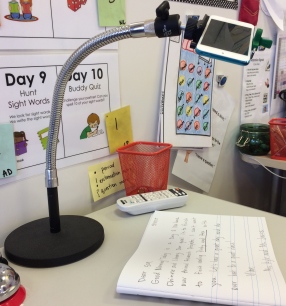
Why should you care?
The days of the knowledge worker are gone. Automation will take jobs. Big data will make decisions. And we are going to live a lot longer. So, what will set you apart? Dan argues we need to pair right brained characteristics of design, story, symphony, empathy, play, and meaning with the left brained proficiencies such as logic and order. Those who can master the pairing , which Dan calls high concept high touch, will succeed in the future.
What can you do about it?
We are all designers! Sure the majority of our designs don’t get beyond imagination. Yet, we all sketched one out on a napkin. The point, we are all curious by nature. Even if your knowledge of design comes mostly from encountering “bad design,” that’s okay. Creativity is applied imagination.


Stories, we like them. One, they excite us more than facts and statistics. Two, they talk to us personally. The challenge, the sum of all knowledge is now available to us instantaneously and for free. If you can’t tell an engaging story or at least fashion context out millions of hits, you are just another statistic.
Connect and arrange the open tabs. Like an artist who draws/paints what s/he sees, you follow the links, connect the dots, and see the patters to synthesize relationships. Your symphony comes by corralling the pieces of the seemingly unrelated and creating knowledge.
Know what others feel, empathy. Don’t sweat the details of systemization, sequence, and logic. Artificial intelligence does this and processes staggering amounts of data quietly, quickly, and without complaining. Fortunately, logic doesn’t alway work with humans. So, it is better to be fuzzy around the edges yet attuned to desires and feelings. Those who can toggle between systematizing and empathy get the bigger picture.
Play is good. We succeed when we are having fun. Learning is not memorizing facts. We learn when we encounter interesting facts. We connect them to form an interpretation that creates knowledge. Play more and tap into the unlimited potential of the right brain to do anything.
We are born for meaning, not passive consumption. In this world of abundance with supersize drinks, binge watching, and mall after mall of the same stuff, it is easy to forget. Meaning rounds out the big picture and helps provide purpose. There’s no instant meaning in the future, yet you can draw upon design, story, symphony, empathy, and play to create it.
Cool brain image by by Austin Kleon @ Creative Commons
